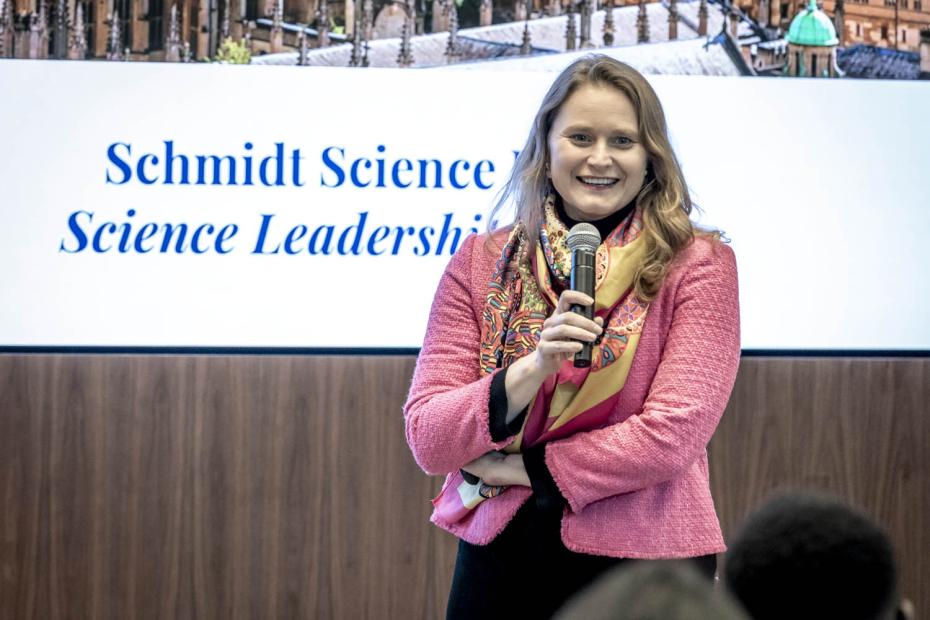
Interdisciplinarity makes us greater than the sum of our parts
The real world is complicated. Let’s give our students the tools to take it on with interdisciplinary education
Interdisciplinarity
Sponsored by

Advice for bringing together multiple academic disciplines into one project or approach, examples of interdisciplinary collaboration done well and how to put interdisciplinarity into practice in research, teaching, leadership and impact

You may also like
Popular resources
Graduates are increasingly entering a work landscape that demands agility, flexibility and a diverse skill set, and as a result, the value of interdisciplinary education is on the rise. Universities are seeking out ways to expand students’ horizons beyond a discipline-specific degree, creating pathways for students to tackle some of the complex challenges they are likely to face in their future careers.
LSE100 is the flagship interdisciplinary course taken by all undergraduate students at the London School of Economics and Political Science (LSE). Since 2010, we have been building our students’ capacity to tackle multidimensional problems through research-rich education, giving them the opportunity to explore transformative global challenges in collaboration with their peers and leading academics from across the university.
- Making group work work: how to enable successful student collaboration
- Spotlight guide: A focus on interdisciplinarity in teaching
- Building the future: the case for inter-faculty learning
The course has evolved significantly since its creation. We shifted its mode of delivery away from face-to-face lectures and towards a flipped classroom format that prioritises collaborative, interactive seminars to maximise student engagement. Delivering this course to more than 20,000 undergraduates over the past decade has offered some important lessons for designing interdisciplinary teaching – that can develop students’ abilities to embrace complexity, as they work to solve the world’s most pressing issues.
Engage students with the breadth of academic research
One of our core aims at LSE100 is to bring students into the heart of the university tradition of thinking like a social scientist, inviting them to embrace our motto of “understanding the causes of things for the betterment of society”. Key to this goal is showcasing the research of our academics. As part of the course, we invite contributions from researchers across the university, filming short interviews to highlight their findings and impact, which students then watch as part of their preparation for LSE100 seminars. Engaging students with the breadth of academic research is a valuable way to develop skills in synthesising and integrating insights from a wide range of perspectives, which is a core competency of interdisciplinary learning.
Signpost the value of different perspectives
In allocating students to LSE100 seminars, we work with our timetabling colleagues to ensure there is as much diversity of perspective in the classroom as possible. The best conversations happen when students are introduced to an idea or argument, then draw on their disciplinary knowledge to interrogate it. Hearing what a philosopher, lawyer, statistician, anthropologist, and political scientist have to say about the concept of fairness, for example, is hugely valuable for our students.
This exposure to new perspectives is accompanied by clear signposting throughout the course when students are engaging with different disciplines. Knowing what a sociological perspective on markets might look like, and how it differs from an economic one, is often an eye-opening experience for first-year undergraduates in thinking beyond the boundaries of their chosen degree.
Develop students’ abilities to tackle wicked problems
We design the course around three complex global challenges, which we argue require an interdisciplinary perspective to meaningfully address. The challenges change over time, and students are given the opportunity to choose the challenge they’re most interested in. Our current challenges (How can we control AI? How can we create a fair society? How can we transform our climate futures?) can all be considered what design theorists Rittel and Webber identified as “wicked problems” – multifaceted, complex problems with no one straightforward solution.
Using a wicked problems framing highlights the value of an interdisciplinary approach, expanding students’ toolbox for how to tackle these thorny issues. Students are empowered to consider how they would lead and make change in a world of wicked problems, drawing not only on their disciplinary knowledge but on the theories, methods and concepts offered by fields other than their own.
Introducing the tools of interdisciplinary thinking
In thinking about the design of an interdisciplinary offering, it may be tempting to fall into a trap of multidisciplinarity – showcasing the contributions of many disciplines, but not reaching a truly interdisciplinary space where students can synthesise and integrate these insights. One way to avoid this pitfall is to draw on interdisciplinary frameworks and methods, giving students the tools they need to do interdisciplinary investigation.
In LSE100, we develop students’ skills in systems thinking with this goal in mind. Systems thinking, itself an interdisciplinary field, invites students to think not just about individual components of systems but the system itself, as well as its connections. Introducing students to feedback loops, systems mapping and the importance of interconnectedness gives them a way to tackle wicked problems, breaking down challenges into essential parts of a complex system.
Embracing complexity through interdisciplinary learning can be a hugely rewarding experience for students, helping prepare them effectively for the world of work. Alongside developing disciplinary expertise and knowledge, we should strive to train our students to think creatively and widely, both when working individually and as part of a team, aiming to create something greater than the sum of its parts.
Jillian Terry is associate professor (education) and co-director of LSE100 at the London School of Economics and Political Science.
If you would like advice and insight from academics and university staff delivered direct to your inbox each week, sign up for the Campus newsletter.
Interdisciplinarity
Sponsored by



Comments (0)
or in order to add a comment